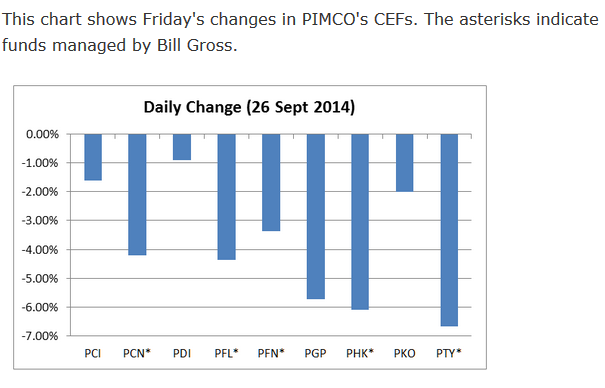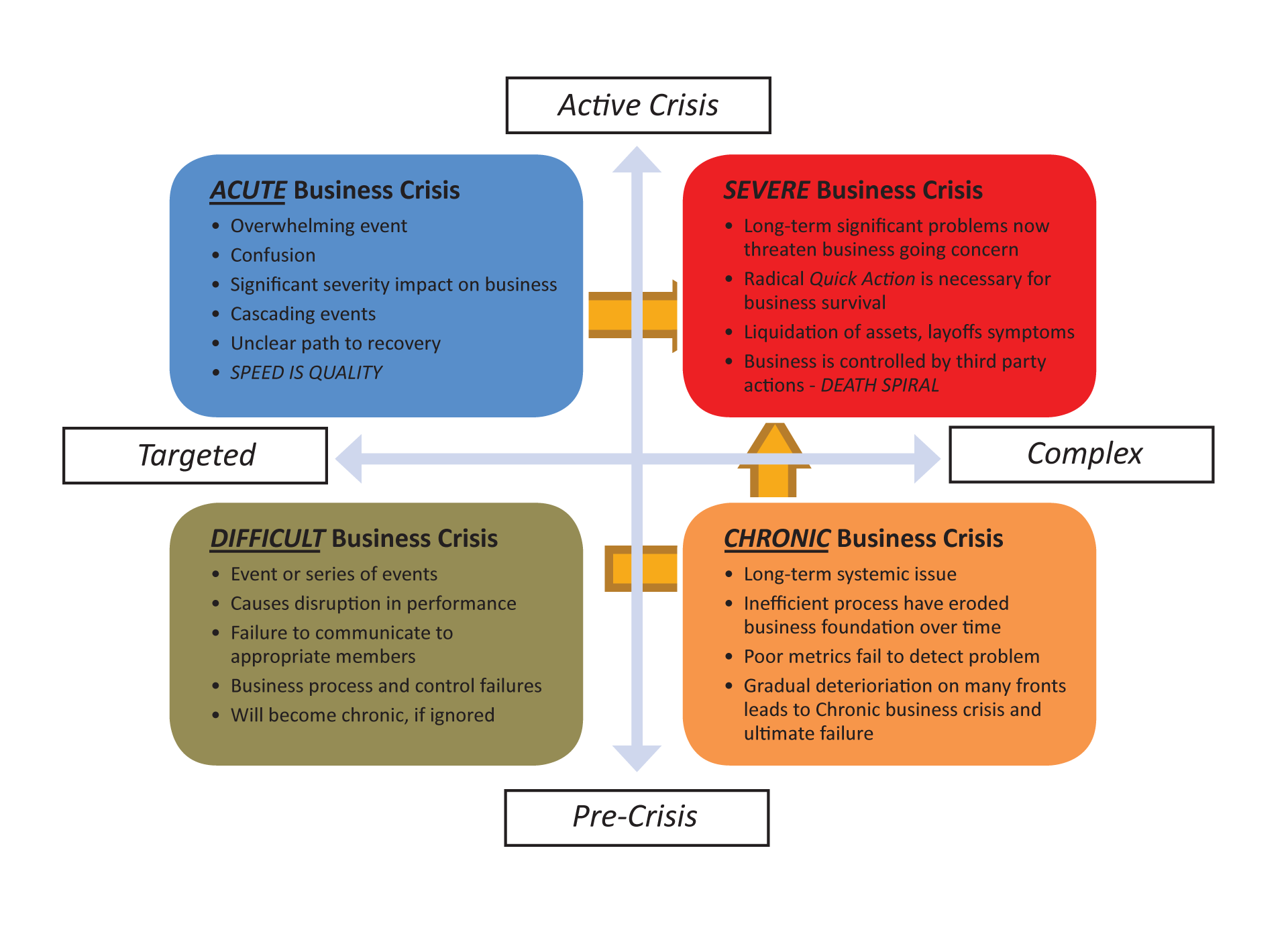PIMCO’s Troubles Highlight Differences Between a Business Continuity Plan and a Business Crisis-Risk™ Management Plan
The tensions in Pacific Investment Management Co.’s (PIMCO) executive suite were growing more intense with each day. One of the firm’s founders, Bill Gross, (known in the industry as “The Bond King”) was up to his old behavior; berating, screaming and demeaning fellow employees. The 70-year-old had been warned about such behavior in the past, but given that he was responsible for many of the firm’s fixed income trading clients, he believed he was immune from repercussion. But according to reports in the Wall Street Journal, one by one, younger executives approached the Executive Committee threatening to quit if Mr. Gross was not fired.
Bill Gross had a well-deserved reputation for exceptional results which came with his bombastic behavior. It has been reported that as one of PIMCO’s top performers, in 2013 he earned $200 million in salary alone. Throughout this time, the company was going through some transitional pains: below average returns; recently parted ways with their CEO; an SEC investigation over pricing practices of its ETF Bond Fund, managed by Mr. Gross.
What happens next highlights the difference between a Business Continuity and Business Crisis-Risk™ Management Plan.
One would presume that given Mr. Gross’s age and stature at PIMCO that the company’s business continuity plan included succession planning. Indeed, the company would actively recruit and train associates targeted to fill the void should Mr. Gross no longer work with the company. The plan most likely would include the requisite communication pieces espousing what Bill Gross meant to the company and the industry. It would point out that this was anticipated by the firm, and that the company had taken the prudent steps of training bright people to pick up where he left off.
All would have been fine with that plan had Mr. Gross not resigned on Friday September 26, 2014 and announced his immediate, new employment with competitor Janus Funds. It appears that he had heard about the steady stream of young executives – those very same being trained to replace him – marching into the CEO’s office, demanding his removal. The company is said to have been pursuing action to fire Mr. Gross, and getting wind of his impending demise, Mr. Gross quit.
This is where it is very apparent that the company did not have a Business Crisis-Risk™ Management Plan. The company was caught off-guard by their founder and top trader’s departure to a competitor. Almost immediately, funds started flowing out of PIMCO and into competitor’s funds, including Janus. An estimated $10 Billion flowed out of PIMCO in the first 24 hours. The $3 Billion ETF Fund which Mr. Gross personally managed saw $550 million or 1/6 leave in the first 48 hours alone. By Monday September 29, 2014, the investment rating agency Morningstar downgraded PIMCO Total Return Fund from Gold, citing the outflow of funds “perhaps hundreds of billions of dollars” as the major reason for the downgrade.
The company’s CEO, Douglas Hodge, issued a release on Friday September 26, 2014 stating that the company “manages nearly $2 Trillion in assets, and we are confident that a vast majority of our clients will continue to stand with us.”
What an interesting choice of words – “stand with us” – as if there was a battle line to cross. People inside the company are expecting $100 Billion in outflows according to the WSJ. Industry experts are estimating PIMCO could ultimately lose between 10 percent and 30 percent of its assets or $600 billion.
PIMCO is in crisis, and the skill sets and management techniques necessary to navigate and survive are different than those of executing a Business Continuity Plan.
What is Business Crisis-Risk™ and how do you know PIMCO was not prepared?
Business Crisis-Risk™ is the risk(s) imbedded in an organization due to structural design or a breakdown in operational and/or functional processes. If not eliminated, these risks will result in an adverse event that will impact people, profitability and/or reputation. Preparing for these risks is the responsibility of management; unfortunately most management teams do not know how to identify impending risk before it occurs.
At PIMCO, it would not have been hard to imagine a leader, one who had previously identified personnel issues and was known for bombastic behavior, to pick up and leave for a competitor. This should have been anticipated and the company has been far too slow to respond effectively.
Why am I certain they did not have a Business Crisis-Risk Management Plan? Well for one, they did not have Mr. Gross under a contractual obligation which would prevent him from leaving and going to a competitor. Next, the communication piece, positioned as ‘us versus them’ does not lead one to believe that PIMCO thinks they are in a position of power. Communication pieces designed to position the company’s young talent as the future, including metrics should have been out to all clients, and meetings and calls held with the largest clients. Instead, management has been reactive, downplaying the impact of the defection and encouraging clients to “stand with” PIMCO.
How do you identify and manage a Business Crisis Risk™?
Firestorm has taught its clients that in a crisis, ‘if you are explaining you are losing’. PIMCO’s CEO stated that because they would not be paying Mr. Gross’s large salary, there would be more money available to attract more talent and pay additional compensation to those remaining. Since traders get paid a percentage of what they make the company, a savvy investor might read this to say “our returns won’t be as good without Mr. Gross.”
When I developed the Business Crisis Diagnostic Model™, I studied how businesses identified and reacted to business crisis-risk (BCR). The earlier management recognized the indicators of BCR, the quicker the risk was addressed and the smaller the impact on the company.
Four Distinct Business Crisis Risk™ Phases
The 4 phases of a crisis: acute, difficult, chronic and severe, contain specific attributes. The severe phase, which is the worst possible impact due to failure to identify and plan for the event includes loss of reputation, loss of clients and ultimately loss of control of the business. PIMCO’s early handling of their crisis leads me to believe that they have entered – or are about to enter – the severe phase. The leadership at Allianz SE, PIMCO’s owners, may be forced to sell the group if the 30% loss of assets materializes.
How do you develop a Business Crisis-Risk™ Management Plan?
A Business Crisis-Risk™ Management Plan begins with a structured methodology by which Executive and Senior Management are led through a process which readily identifies the most critical risks confronting their business. It may include defection of a key employee(s) to a competitor, lack of product innovation as compared to its competitors, loss of a large customer, failure of a key supplier, disruptive shareholders, or CEO improprieties.
Once identified, the executives hand the process off to those who, in a crisis, will be responsible for dealing with the impact. The identified crisis-risks are measured based on a multi-dimensional characteristics such as: financial range of impact, probability of occurrence, speed of onset, crisis duration and crisis intensity. Based upon these results, a triage of importance ranking is produced.
Special cross functional teams then address the specific threat including detailed, step-by-step actions which should be taken at the recognition of the single point of failure. These plans include operational protocols, process overrides and functional realignments, and communication pieces for social media, employees, customers and regulators. These teams are the front line personnel who will actually deal with the crisis. It does not include the C-Suite because these individuals tend to underestimate the probability that the risk will be realized and overstate their ability to mitigate the risk if it occurs.
Firestorm Predict.Plan.Perform.® dictates that in a crisis, you want to be performing, not learning.
An effective Business Crisis-Risk™ Management Plan calls for drills and table-top exercises to test plans, and allows for the crisis management protocols to be learned by all team members. These protocols teach how to react to crisis, identifies key leaders, how decisions are made, when legal counsel is called, what experts are retained, and in some cases, retention of legal counsel for the benefit of privileged communication.
A Business Crisis-Risk™ Management Plan focuses management on containment, resolution and learning from the crisis. All of these steps are prepared well in advance of the crisis occurring. As we watch PIMCO’s management tackle the onslaught of cascading events, we should ask ourselves: “Do we have a Business Crisis-Risk Management Plan that would allow us to handle the ‘unthinkable or unexpected’ business risk?”
If your answer is ‘no’, then be assured it is not a matter of ‘if’ but rather ‘when’ you will find yourself reacting to your own business crisis. Your Business Continuity Plan is designed for planned events of significant importance or magnitude. A Business Crisis-Risk Management Plan is a learned skillset which will allow you to anticipate and react when the unthinkable happens. Let’s hope you handle your next crisis better than PIMCO.
Chart provided by: seekingalpha.com
 “What should we do now?” “What should we say?”
“What should we do now?” “What should we say?”